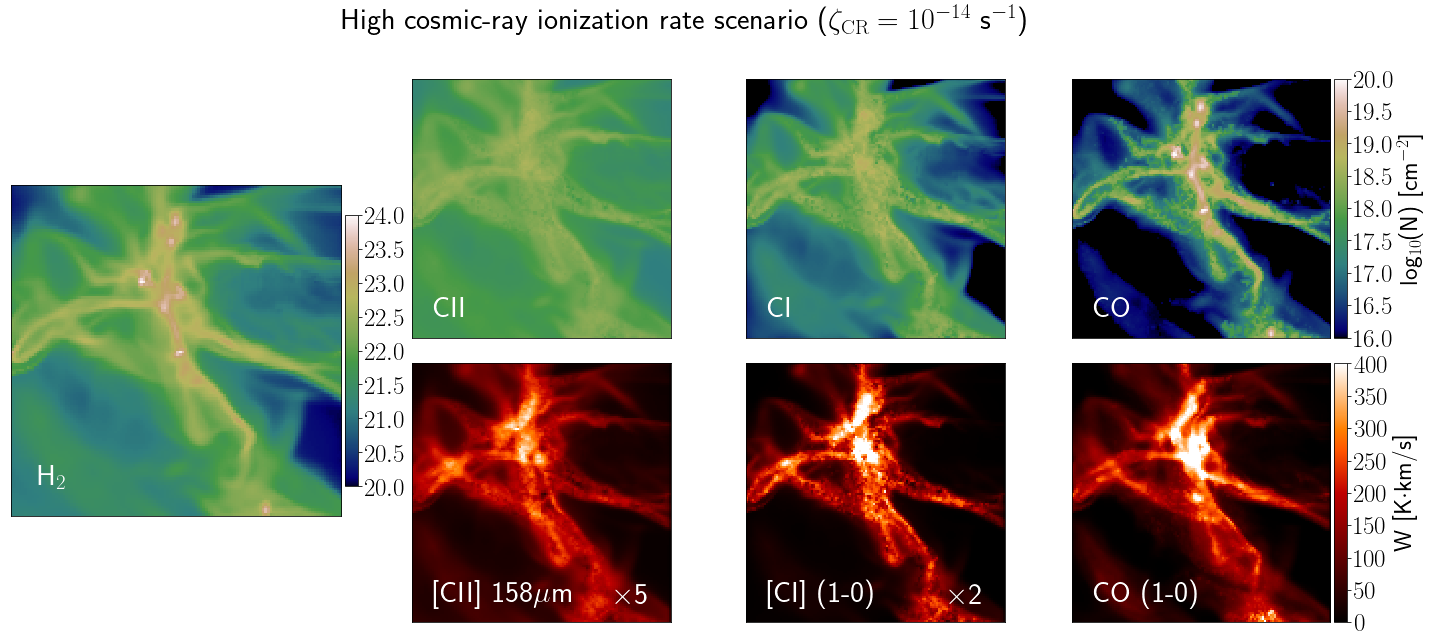Cosmic-rays and their importance in observing the ISM
Thomas Bisbas
The Interstellar Medium (ISM) is powered by various processes which ultimately control its thermodynamical state. It appears that cosmic-rays, which are in fact relativistic charged particles and not "rays" in terms of electromagnetic radiation, play an important role in regulating the chemistry at high column densities. In these literally dark regions, where stellar photons have been severely extinguished, cosmic-rays ignite important chemical networks which lead to the formation of complex molecules. The origin of cosmic-rays and how they gain their energy is generally unknown, although it is believed that they are a product of supernova explosions, strong shocks and star-formation.
In Astrophysics, the term "cosmic-ray ionization rate" (frequently denoted as ζcr) is an important parameter controlling the environmental conditions of the ISM. It represents the probability that an atom or molecule will positively interact with a cosmic-ray particle causing its ionization. It is usually a very small number ranging from 1e-17 to 1e-14 and has units of s-1. Although small, when multiplied with the number of atoms that exist in a galaxy (which can be >1e66), it returns a rather large number of atoms that have interacted with a cosmic-ray particle. This parameter is thus a very important number to consider when simulating the astrochemistry of ISM.
Observing galaxies in the ALMA age has opened an entirely new window in understanding the cosmic star-formation process and how galaxies evolve. Such telescopes capture the radio frequency emitted by atoms and molecules existing in the diffuse and also the dense ISM. Measuring the molecular content of galaxies is key to understand the star-formation in these galaxies. While molecular gas cannot emit radiation that is readily captured by radiotelescopes, astronomers rely often on estimating this gas using other tracers. The most common of these are carbon monoxide (CO), atomic carbon (C or CI) and ionized carbon (C+ or CII).
Using the astrochemical code 3D-PDR (https://astro.uni-koeln.de/en/walch-gassner/downloads/3d-pdr), a realistic three-dimensional density distribution has been simulated under two different cosmic-ray ionization rates. The low cosmic-ray ionization rate scenario with ζcr=1e-17 s-1 (Figure 1), represents the average conditions found in the Milky Way. The high cosmic-ray ionization rate scenario with ζcr=1e-14 s-1 (Figure 2), represents the average conditions met in the Galactic Center and also in high-redshift galaxies that are measured to have strong rates of star-formation.
These simulations showed that while the density distribution remains largely molecular without significant changes between the two cosmic-ray ionization rates, the abundances of CII, CI and CO change as well as the gas temperature, leading to large changes in their line emission. In both figures, the abundances of species are showed in the top panels (CII, CI and CO) and the large left panel (H2) in the form of column density. The lower panels, show the emission of these lines, which is what a radiotelescope would observe if this molecular cloud would be a real object in the sky. The results suggest that for conditions closer to the average (or quiescent) of our Galaxy, CO and CI are the best tracers of molecular gas, while in more extreme conditions met in the Galactic Center and the high-redshift Universe, all carbon lines can become equally good for this purpose.

